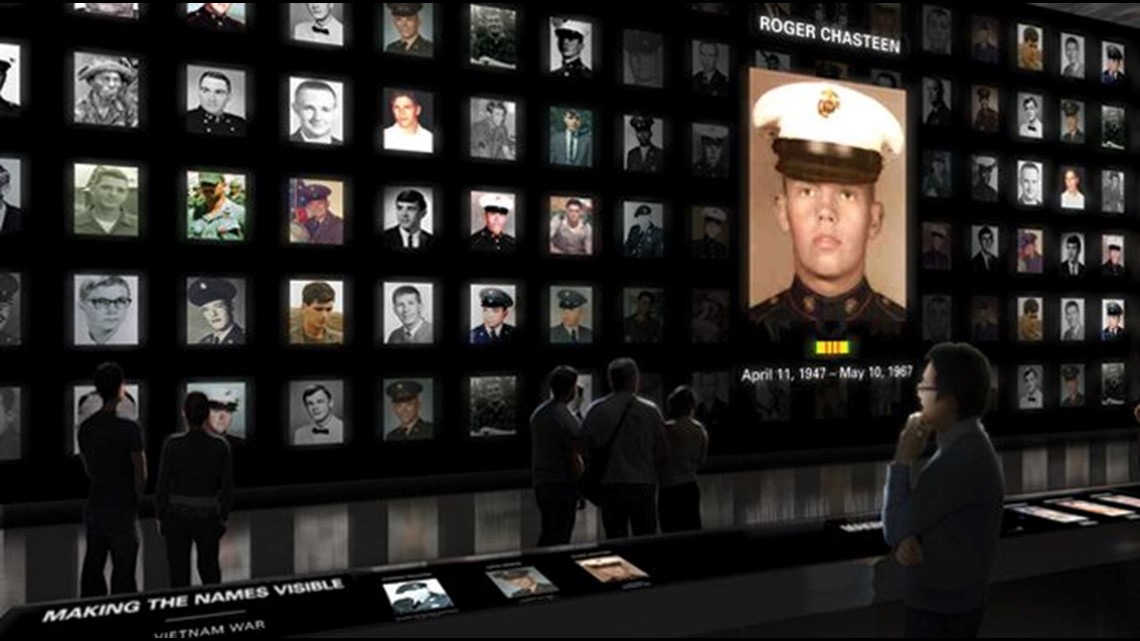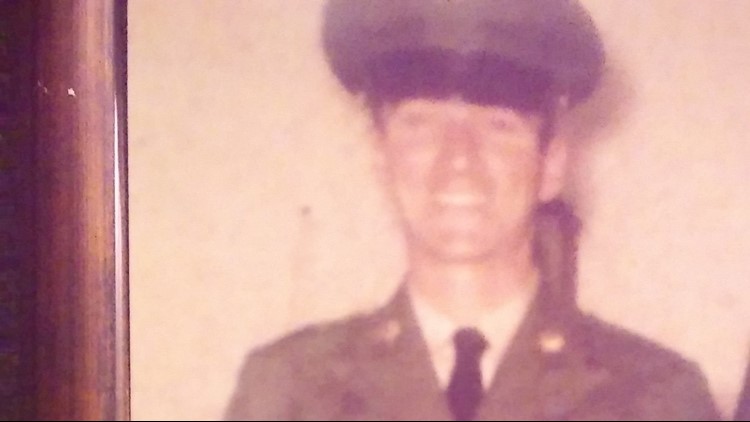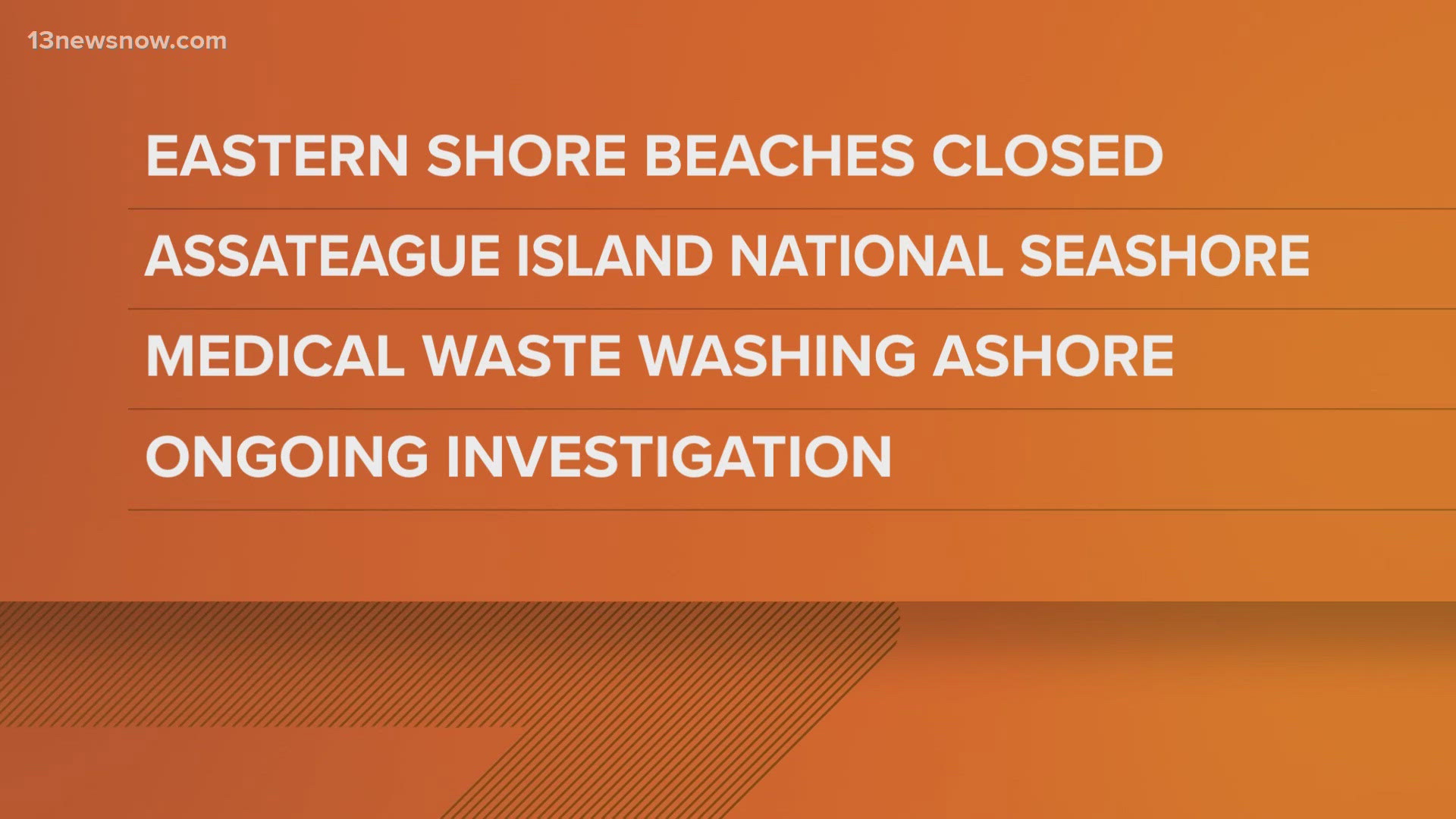EASTVILLE, Va. (Delmarva Now) -- The photo is fuzzy. The memories of him are not.
Curtis Ray Patton grins broadly as he poses in his olive-green U.S. Army dress uniform.
Four brass buttons all but sparkle in the camera's flash. A wedding ring peeks out from the hand dangling at his left side.
The organization that built the Vietnam Veterans Memorial wall on the National Mall is collecting images of the 58,318 people whose names are inscribed on the monument. Over the past nine years, researchers, family members and others have filled in more than 55,000 of the blank spaces on the online "Wall of Faces."
In death, every service member from the Delmarva Peninsula is present and accounted for on the Vietnam Veterans Memorial Fund's virtual memorial — except for one. A generic illustration of a soldier has served as a placeholder for Patton.
No more.
As an homage to Memorial Day, the 50th since Patton's battlefield sacrifice, our partners at Delmarva Now searched for a photo of the Northampton County man to add to the website. After a nearly three-week investigation, the publication can now report: Staff Sgt. Patton's smile could light up a room.
The grainy family snapshot offers a fresh dimension to the sketch of information publicly available about Patton. Delmarva Now's research also included interviews with two of Patton's brothers, who provided new details about the young man's journey from the coal-mining country of southwestern Virginia to the sun-baked cropland of the Eastern Shore.
The new account's most compelling material, though, comes from an email one of Patton's family member's received in 2013 from the last man who saw him alive.
"He saved my life that day as well as a lot of other guys," wrote Carl Johnson, a retired postal worker and farmer from Iowa who fought alongside Patton.
The fellow soldier's account of Patton's death delivered what many relatives had been seeking for five decades: Closure.
This is Patton's story.
Life before the war
Curtis Ray Patton was born June 27, 1941, in Tazewell, a coal town of about 1,300 souls at the time in southwest Virginia, a few miles from the West Virginia border.
He was one of the eldest of Willie and Edna Patton's six children. The family patriarch was a coal miner and was in the Army during World War II. To the extent that there was a high society in the isolated community, the Pattons weren't among them, recalled Calvin Patton, one of the younger brothers.
From an early age, Patton distinguished himself as a musician, especially with a guitar. At gatherings of just about any size, he could be found with his six-string, strumming a country tune Chet Atkins-style — lots of finger-picking.
"He was a fantastic musician and guitar player," Calvin Patton said. But "he could play anything he took a notion to."
Family recollections and public records give this account of his pre-Vietnam years:
After high school, Patton spent some time in Florida but returned to his native Virginia not long after, taking a job as a surveyor with the state roads department on the Eastern Shore.
It was there at a dance that he met Linda Joyner. They were married by a Baptist minister in October 1963 in Smithfield, Virginia, not far from her parents' home. He was 22; she was 18. Afterward, they came back to the Shore, settling in Eastville.
Patton played his guitar in various local bands and worked by day on the narrow peninsula's highways. There didn't seem to be any reason for his life's trajectory to change.
Then came the draft notice.
Born to lead
At some point before Patton shipped off to Vietnam on March 20, 1967, he donned his uniform and posed for a picture with his younger brother, Doyle, who had volunteered for service.
If Patton was ambivalent about his new duty, he doesn't come close to betraying it in the photo. He wears the smile of a young man filled with hope.
At 25 years old, he was a couple years older than the typical soldier, and he found himself on the Army's leadership fast track. Within months, he rose to the rank of sergeant.
To Johnson, who served under Patton's command, the soft-spoken and religious southerner seemed like an Army "lifer."
“He was strictly military. He had a bearing and a body that showed you. I’m positive he would have made a career out of the military. He was a really good soldier," Johnson said in a recent interview.
Patton died proving it.
A heavy loss
On Jan. 30, 1968, North Vietnamese forces launched an all-out attack against South Vietnam's army, U.S. armed forces and their allies. Known as the Tet Offensive, the assault caught U.S. military commanders by surprise with its broad scope and fierceness.
The hellish plight of Patton's cavalry regiment would become the subject of a 2008 book called "The Lost Battalion of Tet," an influential work of military history.
In many ways, what happened to Patton and his fellow soldiers would become emblematic of the overall Vietnam campaign's spotty leadership that doomed the heroics of its fighters.
One of the places that the Viet Cong and their allies attacked was the South Vietnamese city of Hue, which lay along an important supply route. The Battle of Hue would go down as one of the longest and bloodiest clashes in the war. A total of 216 U.S. service members were killed and 1,584 were wounded.
Patton and Johnson's platoon — the 1st Cavalry Division, 2nd Battalion, 12th Regiment — was sent north to aid the embattled Marines in the city.
To get there, they would have to walk about six miles southeast to the city. Along the way, the 550 soldiers encountered two dug-in battalions of enemy troops. Although they had no air or artillery support, they were ordered to attack the considerably larger force.
By the end of the ensuing fighting, more than 60 percent of the 2/12th had been killed or wounded, including Patton.
The 2/12th had no time to transport its dead out of the battle zone, so soldiers buried more than a dozen men, including Patton, in a mass grave.
Calvin Patton was 16 years old when two men in uniform knocked on the door at his parents' house. Since there was nobody to confirm his brother's death, his official status was "missing in action."
“They didn’t tell us much about what happened," he said. "Just that he was missing in action for over a month."
American forces eventually pushed back the North's fighters and recovered the bodies from the hastily dug grave.
Patton's remains were shipped back to Virginia for burial. He was promoted posthumously to staff sergeant and buried at St. Luke's Cemetery in Smithfield, where his widow's kin are also interred.
Since the casket remained closed, more than a few of his relatives harbored doubts for years that he had ever really been found. While they knew the broad narrative about his platoon and that Patton had been killed by enemy gunfire, that was it.
"Never properly notified"
The details finally spilled out, but it took nearly 50 years for it to happen.
It came when one of Patton's nieces in Florida emailed a man who had commented about him on a memorial website. She was about to chaperone her son's fifth-grade field trip to Washington D.C. — and the Vietnam wall — and hoped he might have some information to share.
This was in December 2013. His posting was dated May 2007. She wasn't sure whether the man had the same email or if he was still alive.
Carl T. Johnson's reply landed in her inbox two days later.
"I am so glad that I received your e-mail," he began. "Since the early 70's I have been trying to track down family members of buddies of mine that were KIA (killed in action) in Vietnam. It has been my experience that the families were never properly notified of how their family member died or the circumstances that led to their death."
That was certainly the case with Patton's family.
“Until we got this account back in 2013, there’s always just been a seed of doubt," said Jerry Patton, the youngest of his brothers. He was 11 when Patton died. "You know what I’m saying? This account really helped as far as closure.”
Over the next two, single-spaced pages, Johnson described their loved one's last moments.
As the platoon approached the enemy stronghold, Patton received orders to lead his men out into the open against a heavily fortified line of woods, Johnson wrote. Badly outnumbered and lacking fire support, they managed to gain a foothold and dug in for the night.
That night, Curtis had to relay the devastating news to his troops. They were surrounded, and no one would be coming to their aid.
“I’m sure they’re going to assault us during the night or tomorrow," Curtis told his men calmly, according to Johnson's account.
The attack came in the morning. Mortars rained down, disabling the platoon's machine gun. Sensing an opportunity, the enemy soldiers rushed the 2/12th's line.
The assault focused on Johnson's M-14 automatic rifle. If he ran out of ammunition, the dwindling platoon almost certainly would be overrun and destroyed.
That is just what started to happen. Three men made desperate dashes under heavy fire to bring him more ammo, and all three were gunned down. Here is how Johnson remembered the next few moments on that morning of Feb. 4, 1968:
"By now I only had a few rounds left and Curtis knew the situation. The problem was it was almost sure death to get ammo to me. He did not order someone else to try to get it to me, he took it upon himself to deliver the ammo.
"I seen him running towards me with two full cans of ammo and dirt flying in the air from enemy rounds being fired at him. He got within 6 feet of my position when he was shot and killed," he wrote.
His mission, though, succeeded. The cans were close enough to be retrieved by another soldier in Johnson's foxhole.
"He did not have to be the one to try and reach me but as I said before he was a leader and a very brave man," Johnson said in the email. The extra firepower allowed him to hold off the North Vietnamese-backed forces long enough for the platoon to later escape."
A time to educate
After Patton's death, his widow, Linda, remarried, and his family fell out of touch with her. The couple had no children.
His brother Doyle was sent to Thailand instead of Vietnam. He died in 2000.
Of the six Patton children, three survive: Calvin, Jerry and a sister named Faye Wilcox, who lives in Ohio.
If Curtis Patton hadn't been killed, he would be celebrating his 77th birthday next month. He remains very much alive in his family's memories, though.
The photograph of him and Doyle in their uniforms hangs on Jerry's living room wall in his home not far from where they grew up. When a traveling version of the Vietnam wall went on display a couple towns over a few years ago, both living brothers went to find his name.
There it was: panel 37E, line 26.
When the war ended, service members like his brother "didn’t get the respect they should have,” Calvin Patton said. “They get a lot more respect now than then, I guess. I guess a lot of people are trying to make amends for the way they were treated.”


What neither Calvin nor any other family member knew was that Curtis' presence was missing on another memorial: the Wall of Faces, which the Vietnam Veterans Memorial Fund launched in 2009.
The virtual tribute grew out of the organization's realization that behind each of the names on the iconic wall in D.C., there was a face and a story, said Heidi Zimmerman, vice president of programs and communications.
For now, the Wall of Faces is strictly an online memorial, but that could change soon. The group has raised $42.5 million of the $130 million it needs to build an underground education center near the Lincoln Memorial that will house a two-story screen for the photographs, among other tributes.
After a Delmarva Now reporter contacted him, Jerry Patton had a picture taken of the photo with a smartphone and emailed it to the publication. With the family's permission, the reporter uploaded the image to the Wall of Faces website.
With the addition of Patton's photo, every service member killed in Vietnam who hailed from Accomack, Northampton, Somerset, Sussex, Wicomico or Worcester counties has a face.
“We’re nearing the finish line, and we’re hoping to get the word out so that their faces are never forgotten," Zimmerman said.
The Wall of Faces can be found at vvmf.org/wall-of-faces. The organization accepts multiple photographs of service members. Each person's page includes a link that allows users to upload a new photo.



